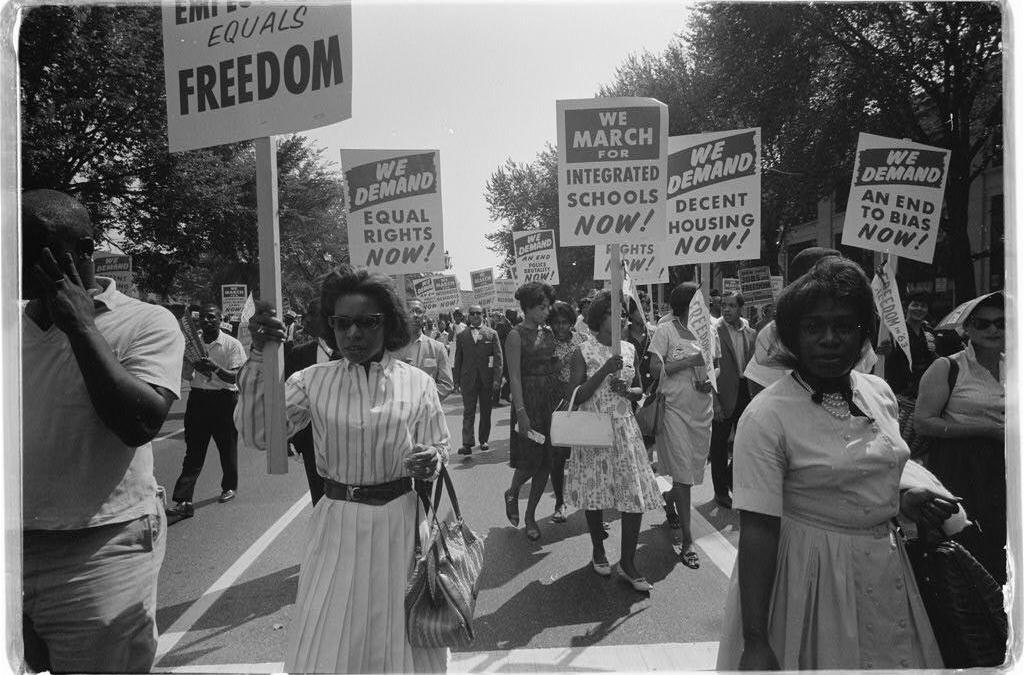In June 2019, I was honored to participate in a summer institute that examined the role that teachers played inside and outside of the Civil Rights Movement. The Teacher’s in the Movement Summer Institute (TIM) was filled with engaging lectures, discussions on critical history, field trips to local Civil Rights locations, and work with primary sources such as interviews and documents from the Civil Rights Era. As an educator, I gained valuable knowledge, resources, and ideas from my work with TIM. One of the ways that TIM impacted me as a teacher was to challenge my thinking of the dominant narrative. As a former history teacher, I taught the US History curriculum as mandated by SOLs that mostly covered two key figures of the Civil Rights Era: Dr. Martin Luther King, Jr. and Rosa Parks. These familiar narratives are safe and comfortable and do not challenge dominant cultural views. The history that students learn and I taught was told through conventional stories as part of the victories of the Civil Rights Movement in which often left the struggle and emotional difficulties of history out of the textbooks. I decided that I wanted my students to experience both the successes and the enduring struggle of the Civil Rights Movement that African Americans experienced that reflects a more complete narrative of history. I believe that history has to be humanized and those that are marginalized need a voice in history. Instead of teaching the history of what we “need,” which are stories of enduring struggle and success from untold sources such as student activists, black teachers, and local activists, we often teach history from the point of view of a white, European, Christian lens, only teaching history for a few select individuals that fit into the master narrative. The power structures in politics, education, and government are controlled by the dominant group and history is told through a lens that is safe and comfortable to this dominant group. History often leaves out those that are marginalized and my hope is that as an educator, I can reframe the dominant narrative to include those stories of success and enduring struggle in the Civil Rights Movement that have been left out of the history books or standard curriculum.
Currently, I am a teacher at an elementary school and I want to focus on reframing the narrative to discuss how can I support difficult conversations and at the same time teach tolerance and empathy through challenging the master narrative. For grades K-2, I would use narratives and pictures books as a source of information that extends the conversation of young learners. Picture books such as Separate is Never Equal and From North to South are great in teaching about the Civil Rights Movement.
For grades 3-5, I would also include picture books such as Enough! 20 Protestors Who Changed America and Say Something. These books are meant to inspire students to look for ways in which they can be more engaged and active in education or their community and how these actions can lead to greater change. I also believe that students in grades 3-5 could benefit from learning from oral histories from those who lived during the Civil Rights Movement and could critically examine photos from the time period. One idea that I have is to play an audio recording from a person who lived through the Civil Rights Era and then have students discuss in small groups what they learned from the audio recording. As a class, we could also discuss our take-aways and what we learned about the time period. As an extension of this activity, I would have students examine photographs through a gallery walk. Students would walk around the classroom with a partner and stop at stations where photographs of the Civil Rights Era were located. Students would work with a partner on answering the following questions: “What is the main idea?” or “Describe in detail what you see.” “Who do you think is the intended audience?” “When was the source created?” “What was going on in the country during that time?” Students would have time to observe, think, and discuss with a partner before we debriefed as a class and discussed what we saw. As a whole group, we would make connections to what we know about the Civil Rights Movement and how the photographs and images lead us to a greater understanding of the struggles for freedom and justice. I would also include narratives and oral histories of historical figures that are often left out of history books such as Anne Moody and black teachers.


